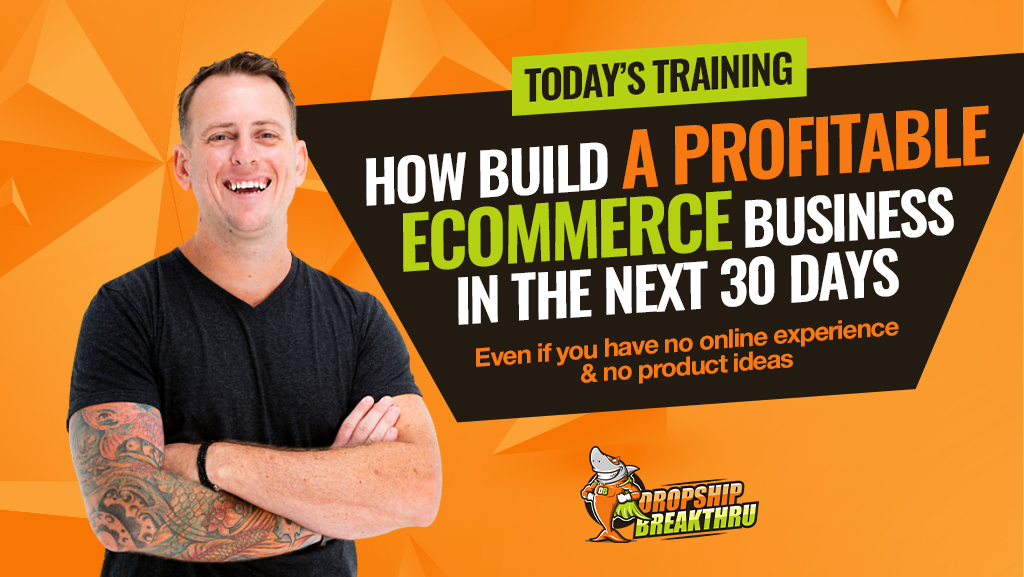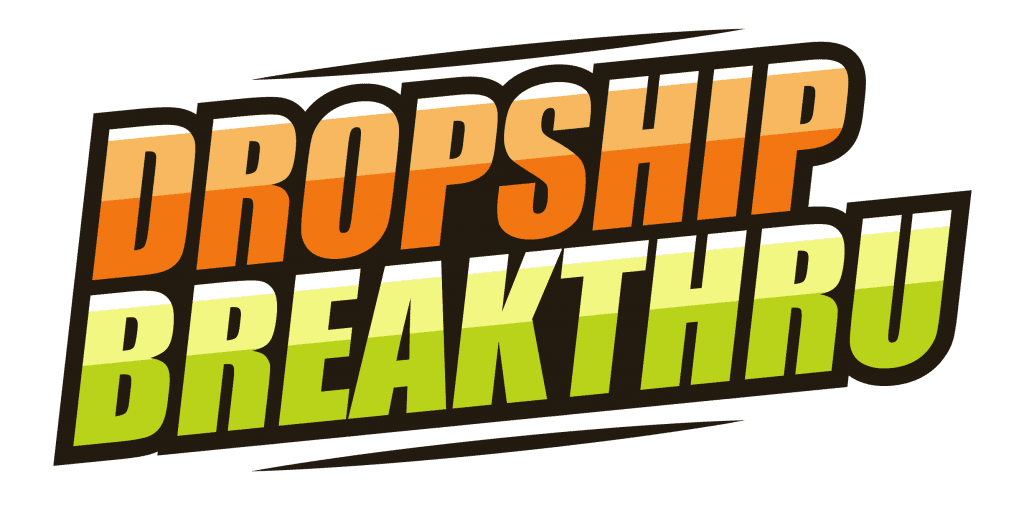Dropshipping Market Research 101: How to Find Your Target Audience

Many dropshippers focus on finding the perfect products to sell.
But to be honest, that’s a backward approach.
Instead, work on identifying your dropshipping target audience.
Focusing on the people you’re selling to — rather than on what you’re selling — makes all the difference when you’re trying to market your store, create content, and bring in more sales.
Otherwise, you could spend months building your site, picking products, and spending money on ads. But you won’t exactly be raking in the revenue.
So how do you find the folks behind the keyboard, really get to know them?
Let’s look at what a dropshipping target audience is, why it’s crucial for your business, and how you can build an audience of repeat customers!
What Is a Dropshipping Target Audience?
Your dropshipping target audience is the specific group you aim to serve with your business. They’re your key customers.
With every marketing campaign, you’re trying to reach your target audience, so they head over to your online store, browse, and (hopefully) buy from you.
Targeting them effectively stops the scattershot approach to marketing and can save you time and money. Instead, you can focus on a smaller subsection of the population most likely to be interested in what you’re selling.
What’s Your Target Audience vs. Target Market?
In high ticket dropshipping, the terms “target market” and “target audience” are often used interchangeably in marketing discussions, but they’re different.
Your target market is the large group of people who might want to buy your products. For example, if you’re selling fitness gear, your target market might be everyone who exercises.
But marketing to a group this large won’t work. That’s why you need to think about how to find your target audience – a smaller group inside your target market.
Using the fitness gear example, your target audience could be senior women who do yoga.
If that’s your audience, you’d pick high ticket dropshipping products and create ads that speak directly to those women.
Knowing Your Audience Makes Selling 10X Easier
So why is it important to conduct dropshipping market research to find your target audience?
Knowing your audience matters. Here’s why:
- Better product choices: When you know who you’re selling to, you can pick products they actually want and need. You’ll find existing high ticket dropshipping niches where there’s already demand for particular products. This saves you from trying to drum up demand, which just doesn’t work!
- More effective marketing: With a clear understanding of your audience, you can create ads and content that speak to them directly. Your target audience cares about your niches, and your message will be more likely to resonate.
- Maximum ROI: Money spent on marketing can bring more returns. If you’re targeting the right people with the right products, they’re more likely to buy. You get better results for the same marketing budget.
- Clear messaging: When you know your audience’s needs, wants, and challenges, you can communicate more clearly. No more guessing. Your product descriptions, emails, and ads can be straight to the point.
5 Simple Steps to Identify Your Target Audience
We’ve been involved in dozens of high ticket dropshipping ventures, and developed a process to identify your target audience. It really works, and we always recommend starting with this process before you do anything else, so you can dial in every aspect of your website, marketing, and product selection for maximum appeal to your audience.
Follow these five steps to pinpoint and understand your target audience:
1. Conduct In-Depth Market Research
Market research is the foundation of understanding your audience.
If you’ve just launched your store (or you’re still researching your dropshipping niche and deciding what to sell), you won’t have any traffic or customer data yet.
That’s okay – you can still find your dropshipping target audience.
If you haven’t set up your site yet and are still looking for dropshipping niches, we recommend starting by finding “enthusiast” niches. They’re full of people interested in a particular activity or hobby. This is one of the best ways to take advantage of existing demand, rather than trying to generate a need for a specific product.
Use targeted Google searches to research the demographics of your target audience, including age, gender, and location.
Then expand your research by using the following:
- Google Keyword Planner: Use this tool to find the search volume of specific keywords. It’s valuable for understanding what potential customers might be searching for, which can indicate market demand. Your searches can also give you related keyword ideas.
- Google Alerts: Set up alerts for keywords related to your industry. You’ll receive updates when new content is published online about those topics. You can keep an eye on market developments, competitors, and emerging trends.
- Google Shopping: By searching for products similar to what you intend to dropship, you can gain insights into market saturation, pricing strategies, and the range of available products.
- Listen to People: Hang out in forums, like Reddit or Facebook Groups where these people hang out. Learn their pain points and joys – most of all, learn their lingo.
You can also use industry reports to learn about current trends, understand what customers want in your niche, and how much they’re willing to pay. For example, what if you’re considering selling premium smart home security systems? You can look at industry-specific reports from platforms like Security Today, or dig into data from broader market research firms like Statista, MarketResearch, and Grand View Research.
The research might indicate that buyers in this high-end segment desire an integrated security solution that pairs with their existing smart home infrastructure. The data could also give you the typical price range for premium security systems.
If you want help with this, try our 5-day challenge. In just 5 days, we’ll help you find a profitable high ticket dropshipping niche!
If you’ve already launched your dropshipping store and you’re getting some traffic, you might be sitting on a gold mine of audience information! Dig into your Google Analytics data to gain insights about your target audience from your website traffic. Find out which pages people visit, what content catches their eye, what products they browse and buy, and more.
2. Analyze Your Competitors
Now it’s time to go into detective mode! Spy on what your rivals are doing and sniff out fresh audience opportunities and underserved market niches.
Start your competitive analysis by making a list of businesses that are selling similar products. Search for your intended products on Google, check platforms like Shopify or WooCommerce for top sellers, or browse marketplaces like Amazon or eBay.
Then take a deep dive into each competitor’s website and online presence by:
- Looking at the products they offer, their pricing strategies, and customer reviews. You’ll see customer pain points, things they’re talking about, and what they’re buying.
- Checking out your competitors’ social media profiles. What content are they posting? What are prospects and customers saying in the comments? Are they complaining? Giving rave reviews of certain products?
- Spotting gaps in their product lineup that you could fill (or seeing if they focus on a niche that works well).
- Signing up for your competitors’ newsletters, following their ads, and seeing how they approach marketing. This can show you what strategies are effective and where there might be opportunities for differentiation.
- Reading reviews of your competitors’ products to find out what they’re doing right and where they might be falling short. Look for patterns in the feedback, as these can be areas of opportunity for your business.
3. Create User Personas
After all your research, you should have a big pile of insights and data points … but that’s not an audience (yet!)
An audience is made up of individual people! That’s why it’s the perfect time in the process to think about creating user personas.
User personas are fictional, detailed profiles representing different segments of your target audience. They’re crafted based on market research and actual data about your existing or potential customers.
Each persona provides a snapshot of a specific user type and details their motivations, challenges, behaviors, and preferences.
Take the dropshipping market research you gathered in step one to group your audience members based on shared characteristics like demographics, interests, buying behavior, etc.
For each segment, create a detailed user persona. Include the person’s age, occupation, interests, challenges, and shopping preferences.
Give each persona a name and a backstory. This helps humanize them and makes them more relatable (and easier to serve).
Here’s an example:
“Garage Guru Gary is a 45-year-old homeowner with a passion for DIY projects and garage organization. He’s always looking for tools and storage solutions to optimize his space.”
You can leverage user personas to:
- Tailor product selections to fit the needs and desires of specific customer groups.
- Identify potential product gaps or market niches.
- Craft marketing messages that resonate.
- Improve the user experience on your site.
4. Gather Feedback
Ready to get the real scoop?
Launch surveys to get straight-from-the-source feedback from potential or existing customers to fine-tune your dropshipping audience. With this goldmine of data, you’ll wave goodbye to guesswork and power your business decisions with rock-solid intel, not just assumptions.
Use tools like Google Forms, SurveyMonkey, or Typeform to design and distribute your surveys.
Ask clear, concise questions, and avoid leading your audience.
Encourage open-ended feedback on your website or after purchases to get deeper insights.
5. Test and Refine Your Results
Whew! That’s a lot of research and a ton of insights — but what do you do now?
This is the real fun stuff: taking what you’ve learned to implement and refine your strategies.
And fine-tuning your results based on what you know about your target audience isn’t a one-time task. It requires consistent testing to gauge the impact of your changes.
Use A/B testing to try out variations of your pages and campaigns to analyze shifts in sales metrics after you’ve adjusted your marketing messages or techniques.
Track audience engagement and sales data to get concrete evidence of what’s working and what’s not. Constantly iterate on your site and marketing strategies to meet your target audience’s needs.
As you gather more information, regularly update and refine your buyer personas.
How to Find Your Dropshipping Target Audience: Focus on the Person Behind the Keyboard
We can’t stress enough how important it is to focus on the person you’re selling to – not just on the products in your store. That’s why finding your dropshipping target audience is essential.
With the right insights about your target audience, you can customize your marketing campaigns to reach the person behind the keyboard. That’s the person considering making a high ticket purchase from you – their needs, desires, and struggles matter more than anything else.
Knowing your target audience shifts your dropshipping venture from guesswork to a data-driven approach. With the right insights, you can build a successful dropshipping business.
If you’re committed to fast-tracking your success, take advantage of our free training, where we show you how to set up and launch your dropshipping business in just 30 days. Sign up here to take this on-demand training.

Want to start your own high ticket dropshipping business?
Watch this FREE, on-demand training session that will uncover the exact steps you need to take to launch your first high ticket dropshipping business in the next 30 days.

Article by Ben Knegendorf
Ben Knegendorf realized at 29 he needed to find another career path. Since then, he’s:
- Successfully exited a high-ticket drop shipping business that he helped take from $1 to $11M annual revenue in just 2.5 years
- Eliminated $40,000+ of personal debt
- Joined Dropship Breakthru as co-owner in 2021
© Dropship Breakthru 2024

